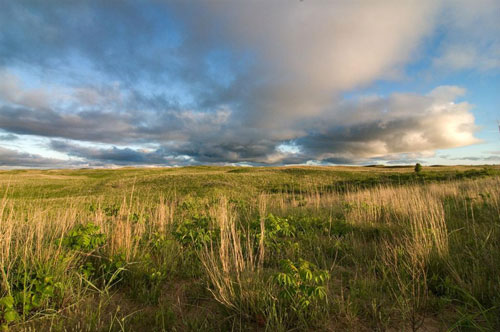Conservation to the rescue!
Ok, it’s not quite the action-packed, superhero story you might see in movie theaters. But maybe it should be.
A new study from The Nature Conservancy shows that prescribed burning of grasslands could be the key to sustainable family ranching. Not only does burning help improve the grasslands from an ecological perspective, it could increase income for ranching families.
The study was conducted at the Conservancy’s 56,000-acre Niobrara Valley Preserve in north-central Nebraska—a demonstration site for grasslands management and restoration. Researchers captured ecological data using remote sensing imagery and plant diversity and density transects at sites that had been cleared of invasive eastern redcedar trees either mechanically or with prescribed fire.
Now here’s where the rancher’s paycheck comes in: Removal of the invasive cedar resulted in a 22% increase in the groundcover that bison and cattle like to graze on—which translates into greater income for ranchers. While an economic study comparing mechanical removal to prescribed burning still needs to be conducted, estimates suggest that prescribed fire is substantially cheaper.
Some ranchers have long been resistant to prescribed burning—it’s seen as an extra risk in an already risky business—yet ecologists know that grasslands need routine burning to thrive. Perhaps the ultimate success of the Niobrara project was the cultural transformation that took place: The community’s acceptance and adoption of prescribed burning went from 10% in 1990 to 50% in 2010, as estimated by focus group participants.
While the study’s findings may be specific to this part of Nebraska, the researchers identified key factors that could be readily replicated at other grassland sites around the globe. One of the most important was creating local intermediary institutions (in this case, a task force and fire association) that advocated for government incentives for the wider use of prescribed burns and cedar removal in the area.
Some 800 million people worldwide live near grasslands and depend on them for their livelihoods, yet grasslands are one of the world’s most imperiled habitats—threatened by conversion to agriculture, development and timber plantations. The Niobrara study is one of 4 where the Conservancy has assessed the socioeconomic benefits of healthy grasslands to people; the other sites are in Kenya, South Africa and Mongolia.
(Image: Niobrara Valley Preserve, Nebraska. Source: Chris Helzer/TNC.)
